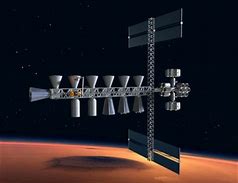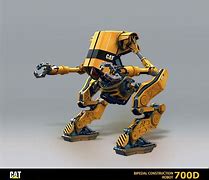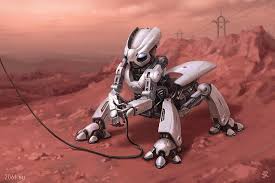Regardless of the money spent by agencies such as NASA and SETI who feel assured that sooner or later man will make contact with an extraterrestrial civilization it seems there have been no results from our methodical search via satellites and telescope monitoring. For some reason it seems that our costly attempts at trying to find planets that give off intelligent signals or some indicators of artificial energy production, nothing has materialized. Two constellations suspected of having been origins of intruders in our world such as the abductions of Barney Hill and his wife, Betty, who identified Zeta Reticuli before astronomers ever discovered it, or Vega which has emitted seemingly intelligent signals, nothing has been convincingly proven. Though we now know just how much science has been politicized, still the standard for proof is a continued repeat or reproducible observation in order to validate an action or event.
Nobody there?
Instead, what NASA’s special detection satellites have only found planets that are not only lifeless but extremely hostile to any life form we know of on our planet? The very rare possibility of finding the “Goldie Locks” zone of planets life that would been in an orbit not too close to the heat of a star, not too far away that they would be too frigid, and having a companion star that does not wreak havoc with deadly gamma rays has yielded some results but without evidence of life. The vast majority of indicators tells us that most planets have weather that would destroy earth based life as well as a satellite or landing craft.
Wrong guess?
Things NASA has learned that proved their assumptions wrong have been numerous. This tells us that though the molecular and atomic structure of the universe may be consistent as Einstein proved, that is just about the only thing NASA was correct about. One of their biggest assumptions were that most solar systems would probably be like ours. The small yellow dwarf we know as “Sol”. Our nearest companion Proxima Centauri. With only 1/8 the mass of our sun is a red dwarf and thought to be part of a triple star system in Alpha Centauri. At 4.22 light years from our sun, still that is a great distance. Our satellites have probed hundreds of light years into the universe and it appears nothing even in the remote regions appears promising.
Oblivious?
This indicates 2 possibilities. Either, we (The Human race) are so primitive that we cannot detect the advanced signs of intelligent signals because their form of transmission is so different than ours and we are attempting to detect by very obsolete methods. Or, number 2-whatever visitations we have deemed UFO’s from other planets have visited us through interdimensional travel or wormholes. These forms of propulsion are not well known, theorized, or understood. Unless there are ultra-secret programs that are suspected by conspiracy theorists it appears we may very well be alone in a vast universe of hostile planets or rare uninhabited planets that would be Earth-like.
Never the twain shall meet
Many scientists have speculated that any civilization that had even a billion more years head start of development over humans might be so far advanced in comparison to us that an analogy might illustrate the disparity similar to a human researcher attempting to communicate with a paramecium, a very primitive cellular life form. Reflecting on the inherent destructive nature of the human race one might wonder just how primitive we would seem to another more advanced species. We would most likely feel ashamed! Just remember that almost every scientific theory proven correct or every technological advancement considered to be impossible was first conceived of in science fiction. So, at least, we, as a species, can visualize where the future might take mankind. We might even be able to manifest our future ourselves through visionary creation.
The opposite way!
Things that NASA was completely wrong about were such assumptions as gas giants such as Jupiter, Neptune, and Uranus were thought be likely positioned in other distant solar systems as in ours with the larger planets located further from their suns in orbit. In actuality there are many alien planetary systems where the larger planets are the ones closest to their sun and rather than being gas giants they would have a solid metallic core like the rocky planets in our solar system located closer as opposed to the distant frozen gas giants. This caught NASA quite by surprise.
Foreign planetary arrangements
Scientists had no idea just how hostile the conditions on a distant planet light years away could be until one celestial body was measured as having 3,500 mph. planetary winds in a noxious frozen atmosphere. Another thing NASA was mistaken about was the numerous occurrence of binary star systems where a dual partnership of two gravitationally attracted stars actually form a solar system that is battered by the opposing tidal effect of two different stars. They have even discovered triple star systems each bound by the other’s gravitational field. In many cases one companion star has a stronger gravitation pull that begins to wrest material away from the weaker star to be consumed by its celestial companion.
LGM’s
Many pulsars (stars that have imploded and compacted) having such a powerful magnetic pull that light can barely escape them with a single rotation pulse. Each pulse may emit X-rays or Gamma rays that will strike and pummel any unfortunate planets that are orbiting them! So a beam of deadly radiation regularly bombards the surface of each member of that solar system. There would be little if any possibility of life on these “Death Planets” or as we know it. These stars rapidly rotate and emit a timely pulse that scientists excitedly considered they were receiving the first intelligent signals ever encountered from the universe before they discovered the true source of that signal simply being a pulsar! They were nicknamed laughingly (“LGM’s) little green men.
Knock knock who’s there?
Life as we know it on Earth is carbon based. Our molecular make up is primarily the carbon molecule chain, yet scientists speculate that life could evolve around the silicon based composition as well. It would obviously greatly differ from us, and would probably stand up to hot and cold extremes much more resiliently than life as we have observed. The question is, would we be able to detect that biological signal given off with the instrumentality we are now using? Former NASA archaeologist Farouk El Baz once speculated that our distant exploration satellites might land on or orbit around alien planets completely oblivious to the existence of life forms due to the ineffective instrumentality-asking the wrong questions or not being able to recognize the differing geometry of alien housing structures.
Could this be the case?
At a Crash Retrieval UFO conference in Las Vegas that I attended, physicist Stanton Friedman made some very interesting points in his speech opening the convention. He made a historical analogy. When Germany began its devastating aerial assault over London and Great Britain in 1940 their reconnaissance aircraft scanned the topography of the Island for potential threats to their Luftwaffe. Some people have asked why the Germans did not find the huge radar masts situated over the Cliffs of Dover as they flew from across the English Channel. It was radar scanning that would eventually defeat the German air crews on their bombing mission as the British knew when they were coming and could anticipate their approach. This led to unsustainable attrition that forced the Germans to terminate their campaign. According to Stanton Friedman, the German’s were only visually scanning and using radio guidance. They had no idea of the radar masts that were bouncing microwaves off their bombing fleet. This is how one civilization might completely miss the presence of another. They simply did not know what to look for!










